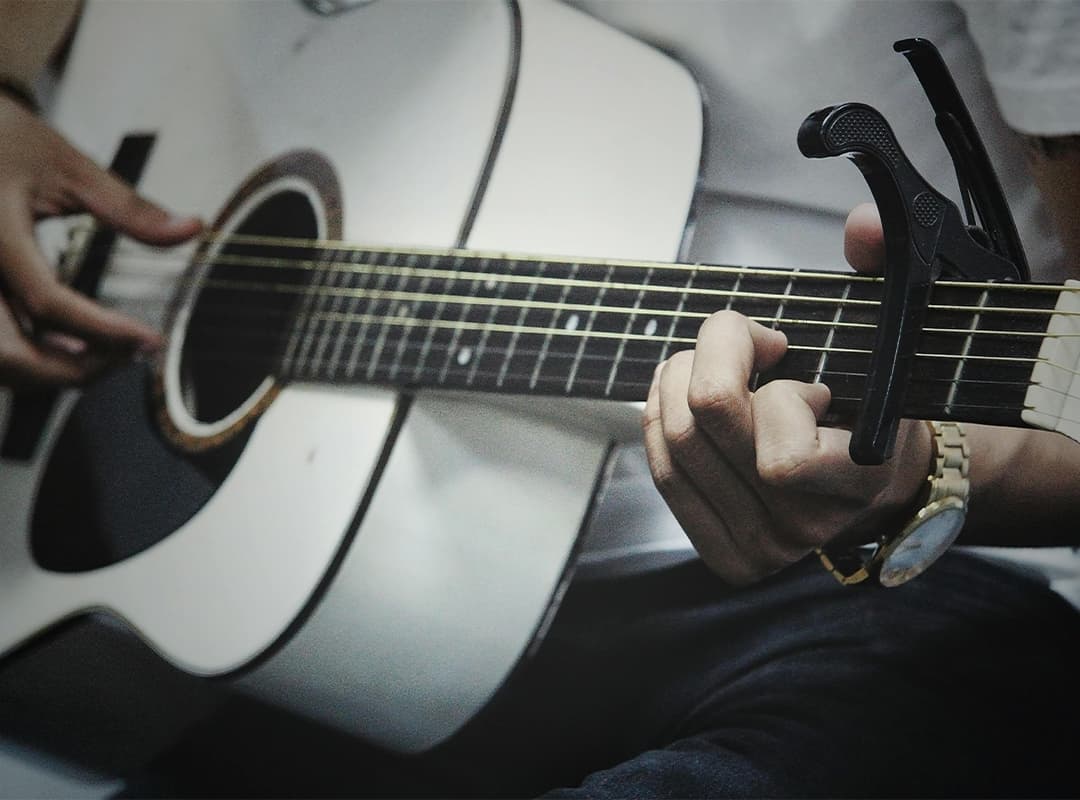Learning to play guitar is exciting, but one of the biggest challenges for beginners is making their playing sound musical. It’s common to start with basic chords and strumming patterns, but sometimes, your playing might not sound like the song you’re trying to replicate. So how do you make sure your guitar playing actually sounds like the music you love? Here are some key tips to help your songs come to life on the guitar.
1. Master the Chord Transitions
One of the most important elements in making your playing sound smooth and musical is mastering chord transitions. When you’re first learning, it’s easy to pause between chords, but these pauses can break the flow of a song.
To fix this:
- Practice slow transitions between chords. Focus on moving your fingers smoothly from one chord to the next without stopping.
- Start with just two chords and repeat the transition until it feels natural.
- As you improve, gradually increase your speed while maintaining smooth transitions.
Working on these changes will help your song maintain its rhythm and sound more like the music you want to play.
2. Focus on Rhythm and Timing
Rhythm is the backbone of any song, and having a steady rhythm will immediately make your playing sound more musical. Beginners often overlook timing, focusing more on getting the chords right. However, playing chords in perfect rhythm—even with a simple strumming pattern—can transform how a song sounds.
- Use a metronome or a metronome app to help you stay in time. Start slow and gradually speed up as you gain confidence.
- Listen to the original song and pay attention to the rhythm. Try to match your strumming pattern and timing to the music.
Consistent rhythm will make even simple chords sound like part of a cohesive song.
3. Dynamic Strumming
Strumming isn’t just about hitting all the strings at once—it’s about how you hit them. One of the easiest ways to add musicality to your playing is to vary the dynamics (the volume and intensity of your strumming).
- Emphasize certain beats in a song. For example, in 4/4 time, you might strum louder on the first and third beats to create a driving rhythm.
- Experiment with soft and loud strumming to create contrast in different parts of a song, especially during the verses and chorus.
By focusing on dynamics, you can add emotion and expression to your playing, making the song feel more alive.
4. Play with Emotion
Beyond technical skills, playing with emotion is key to making a song sound musical. Whether the song is soft and mellow or fast and energetic, connecting emotionally to what you’re playing can change how the music feels.
- Think about the mood of the song and reflect that in your playing. If the song is upbeat, keep your strumming lively and quick. If it’s a ballad, slow down and let your strums ring out.
Playing with emotion turns your guitar into a storytelling tool, making the song resonate more deeply with both you and your audience.
5. Listen to the Original Song
A huge part of making your playing sound like music is learning to mimic the subtleties of the original song. Sometimes, beginners only focus on getting the right chords but miss the nuances that give a song its character.
- Pay close attention to the details: Is the strumming pattern consistent throughout the song, or does it change during the chorus or bridge? Are there pauses or accented beats?
- Listen for rhythm breaks or pauses in the song and try to replicate them in your playing.
Analyzing the song closely will help you play it more accurately, so it sounds more like the version you’re used to hearing.
6. Learn to Use Your Picking Hand
For many guitarists, learning to use the picking hand effectively can make a huge difference. If you’re playing fingerstyle or want to add some melody lines to your strumming, developing coordination with your picking hand is crucial.
- Practice fingerpicking patterns that add texture to your chords. Start with basic patterns, then gradually add complexity as you improve.
- For strumming, experiment with muting (lightly resting the side of your hand on the strings) to create a percussive sound between chords.
Your picking hand is just as important as your fretting hand when it comes to making a song sound musical.
7. Adding Fills and Variations
Once you’ve mastered the basics, start adding small variations to make your playing more interesting. You don’t have to stick rigidly to the chords or strumming pattern—experiment with fills, hammer-ons, or pull-offs to enhance the sound.
- Fills are small melodic phrases that can be inserted between chords, adding color and personality to the song.
- Hammer-ons and pull-offs add expression and fluidity to your chord transitions or individual note playing.
These techniques are common in songs across many genres, from folk to rock, and they can help make your playing stand out.
8. Sing Along to Match the Music
If you’re a singer, playing guitar and singing at the same time can help you feel the rhythm and flow of a song more naturally. Singing helps you internalize the timing of chord changes and strumming patterns. Even if you’re not planning to perform, it’s a good exercise to sing along while playing to develop a deeper sense of musicality.
When you combine guitar and vocals, you create a full musical experience. This holistic approach to learning can make your playing sound more like a complete song, just like you’d hear at the Institute of Art Minneapolis, where creative expression and musical performances often blend together.
Making your guitar playing sound musical involves more than just playing the right chords. Focus on chord transitions, rhythm, and strumming dynamics. Add emotion to your playing, pay attention to the original song, and experiment with fills or picking techniques. As you develop these skills, you’ll start to hear your songs come to life on the guitar, turning basic chord progressions into music that truly sounds like what you envision.
With consistent practice and these tips in mind, you’ll find that your guitar playing not only sounds more like music but also reflects your own personal style. Keep at it, and soon enough, you’ll feel like you’re truly playing songs, not just chords!


